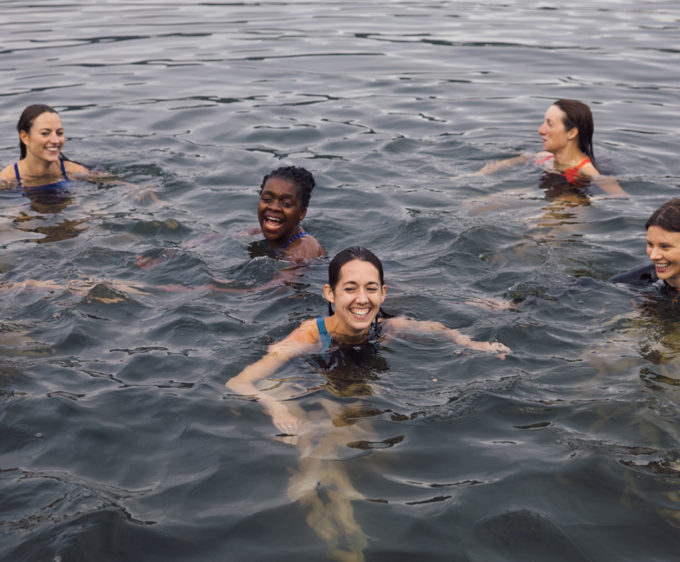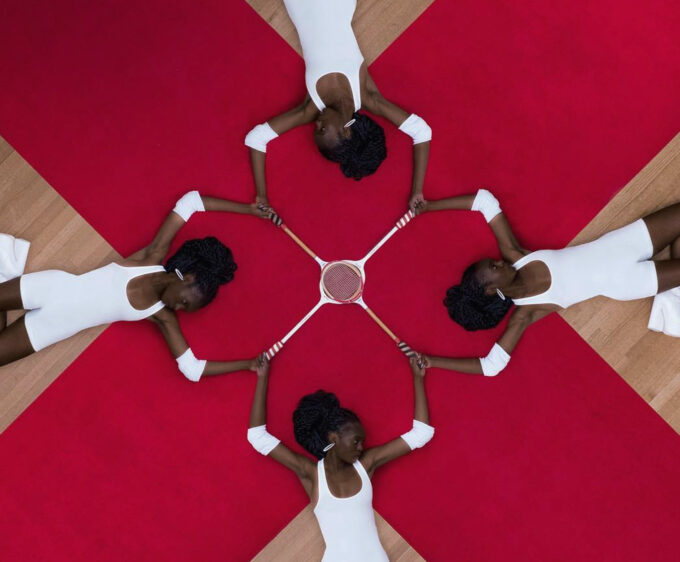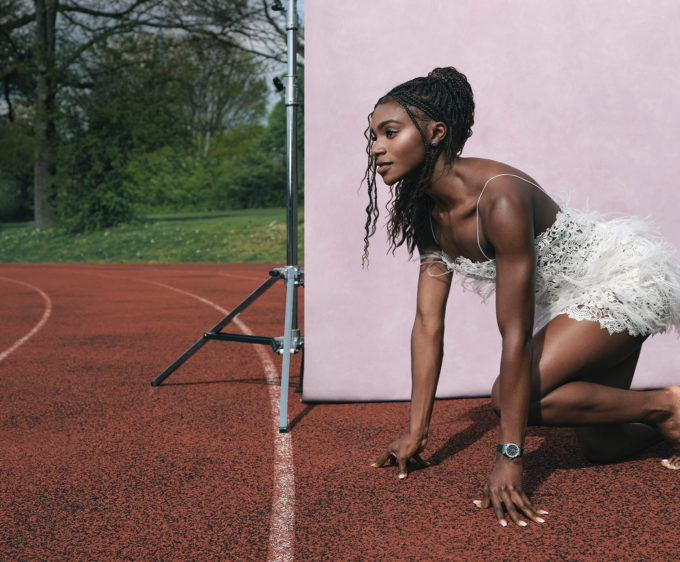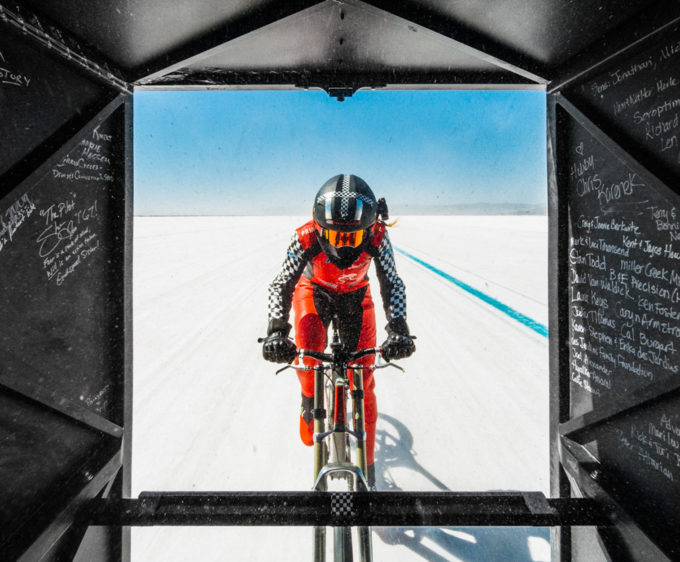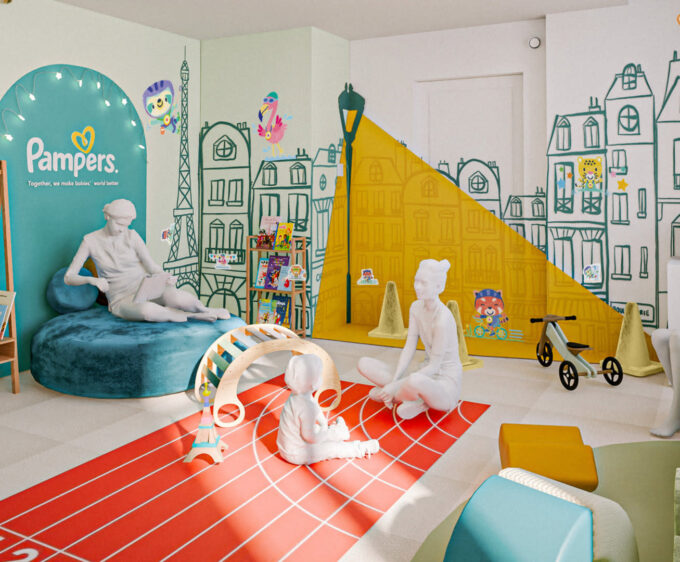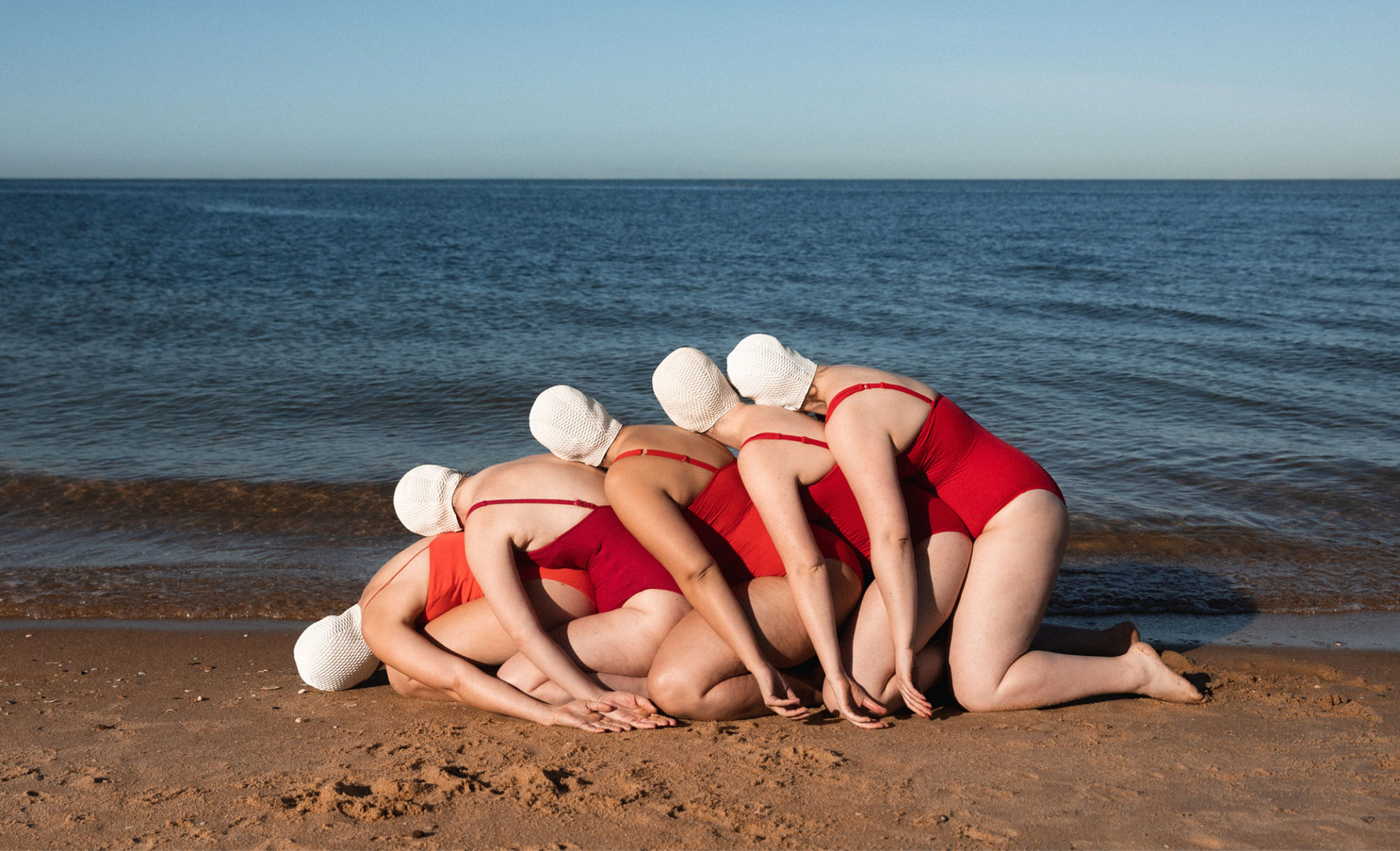
Sisterhood Synchro
The evolution of synchronised swimming. We meet three teams across the world who all have something unique to offer
By Alice Snape
The rippling blue water gives way to a pointed foot. There’s multiple bodies clad in shimmery mermaid-like scales; glistening limbs moving in harmony. Gliding at the exact same speed as if they are floating on top of a lake, twelve pairs of balletic arms move gracefully through the air, as there’s barely a splash from the calm water in which their torsos are submerged. A woman is lifted out of the water, her arms outstretched, just as the music crescendos to a climax.
“When we swim, our mind is focused on ourselves and the task we have to do individually. When we perform, our thoughts are on the choreography, and there’s absolute faith and trust in the team,” says Konstantina Galiotou, the founding member of Greek synchronised swimming team, the Naiads. “But we don’t feel alone, quite the opposite – there’s a sense of solidarity. We all move as one, focusing on doing our very best for ourselves and the team; one stolen glance or smile is enough to boost our spirits and make us soar.”
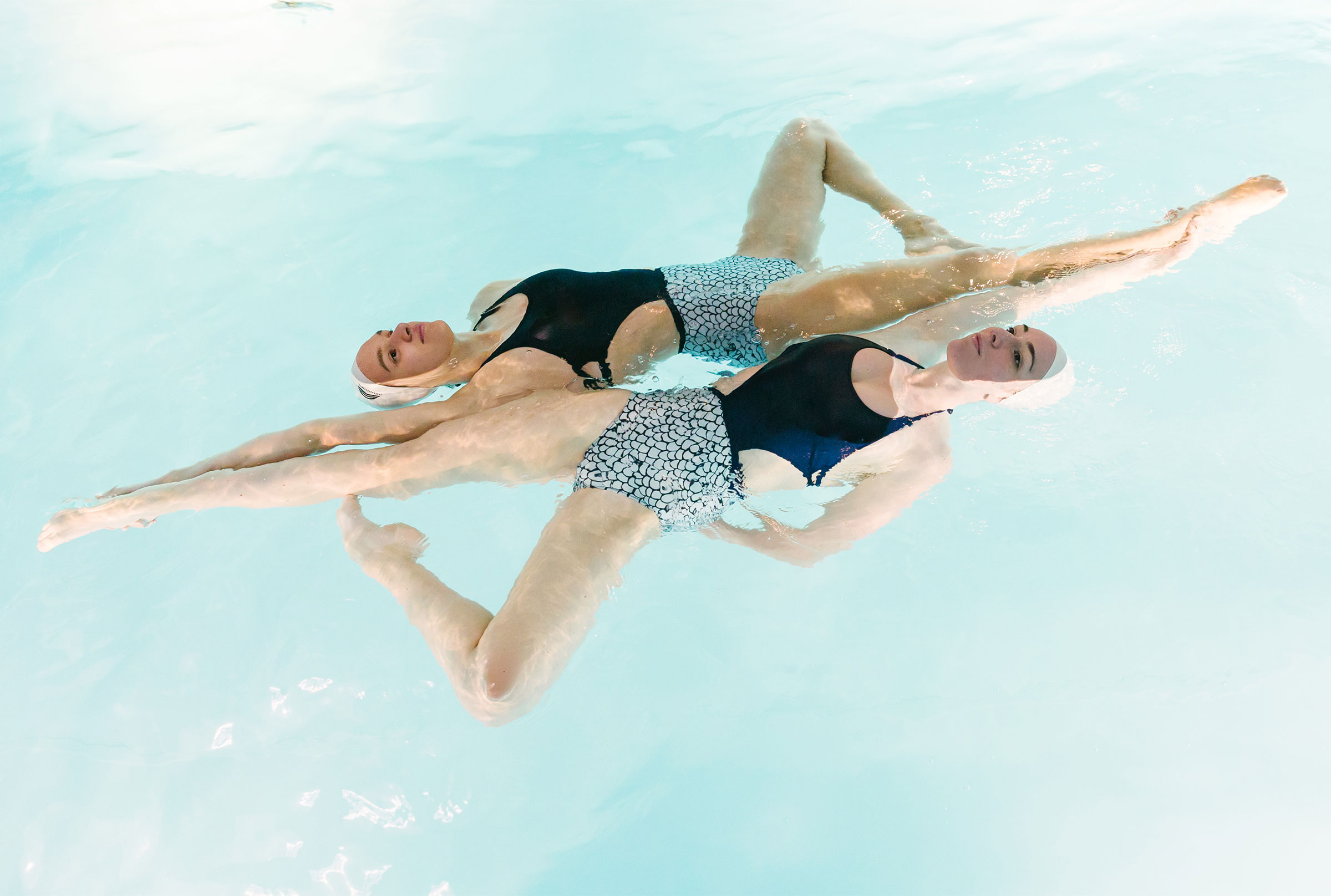
The history of synchronising swimming is considered by many to be a relatively short one. Defined by the Oxford English Dictionary as: “A sport in which members of a team of swimmers perform coordinated or identical movements in time to music,” it didn’t become an Olympic sport until 1984. And it’s often credited as the invention of Australian swimmer Annette Kellermanin the 1900s. Kellerman was also a ballerina and one of the first women to wear a one-piece swimsuit that showed her thighs – highly risqué at the time. In her performances, she wove together diving, swimming and dancing and was billed as the ‘Diving Venus’ when she performed in New York City.
However, that might not be the full story. A Smithsonian article titled ‘Synchronised Swimming Has a History That Dates Back to Ancient Rome’ points out that first-century A.D. poet Martial wrote epigraphs about a group of women who swam, dove and created elaborate shapes with their nude bodies in the flooded amphitheatre of the Colosseum. He described the women as water nymphs, and questioned: “Who designed such amazing tricks in the limpid waves?”
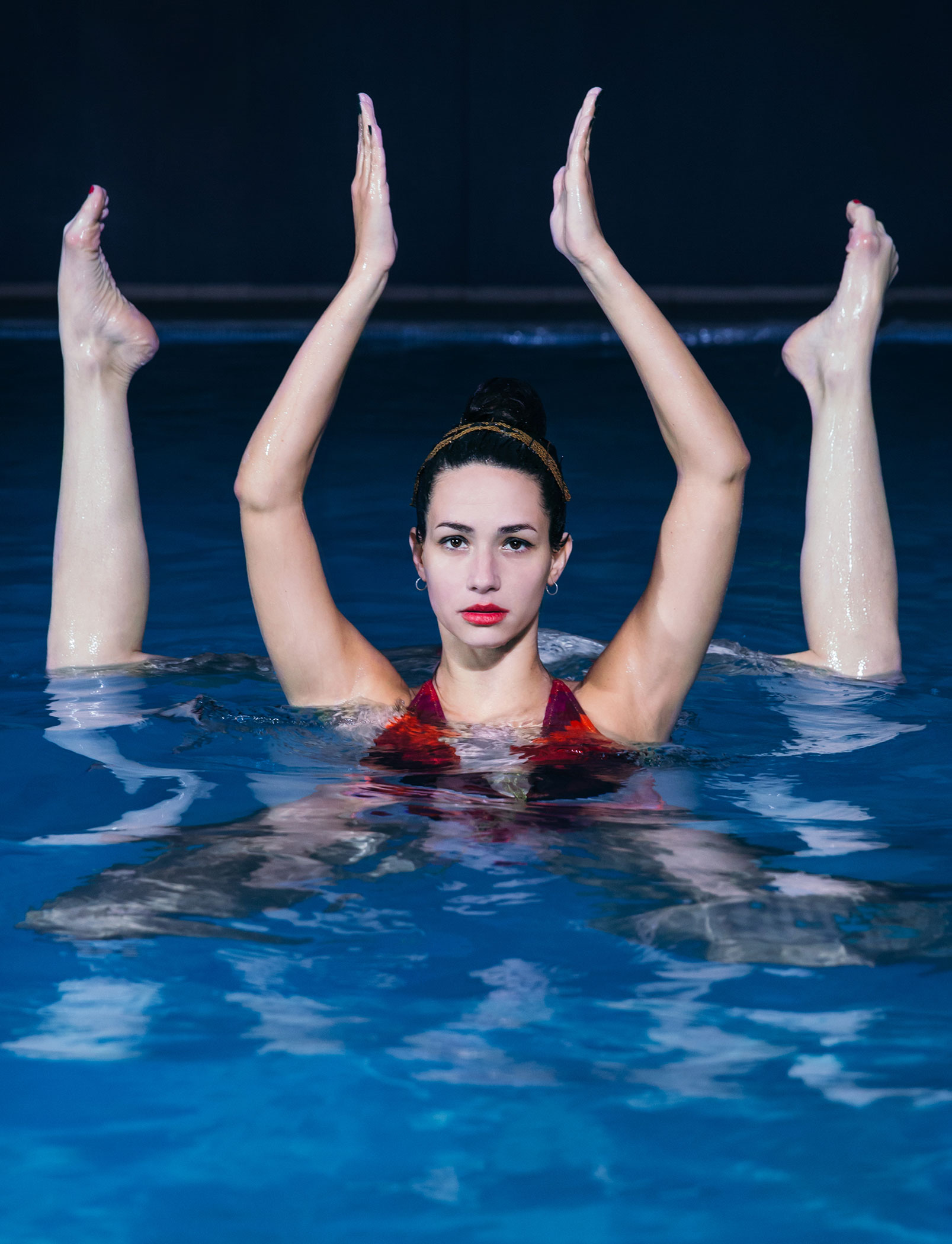
And so it seems apt that Konstantina’s group of 12 women – all professional synchronised swimmers – call themselves the Naiads; they are ballerinas, and the water is their stage. In Greek mythology, the Naiads were the nymphs who inhabited rivers, streams, lakes, fountains and springs – goddesses depicted in historical artwork as bare-breasted seductresses. A serendipitous link to Martial’s words and synchronised swimming’s apparent Ancient Roman past.
This team of Naiads was formed in 2016, “with a lot of hard work and a little bit of luck,” explains founder and performer Konstantina. They started as just four women – “we were best friends and members of the Greek National Team. Now it’s the team of my dreams,” she gushed. “It’s the ballet class I never took; the dancing in glorious costumes, the thrill of the performance. I never want to leave the water.” The team choreograph performances for hotels and entertainment venues as well as events, such as weddings, anniversaries or birthday parties. Often the occasion itself is used as the driving point for their movement – Konstantina calls it “in-water entertainment” or a “spectacular spectacle.”
graceful
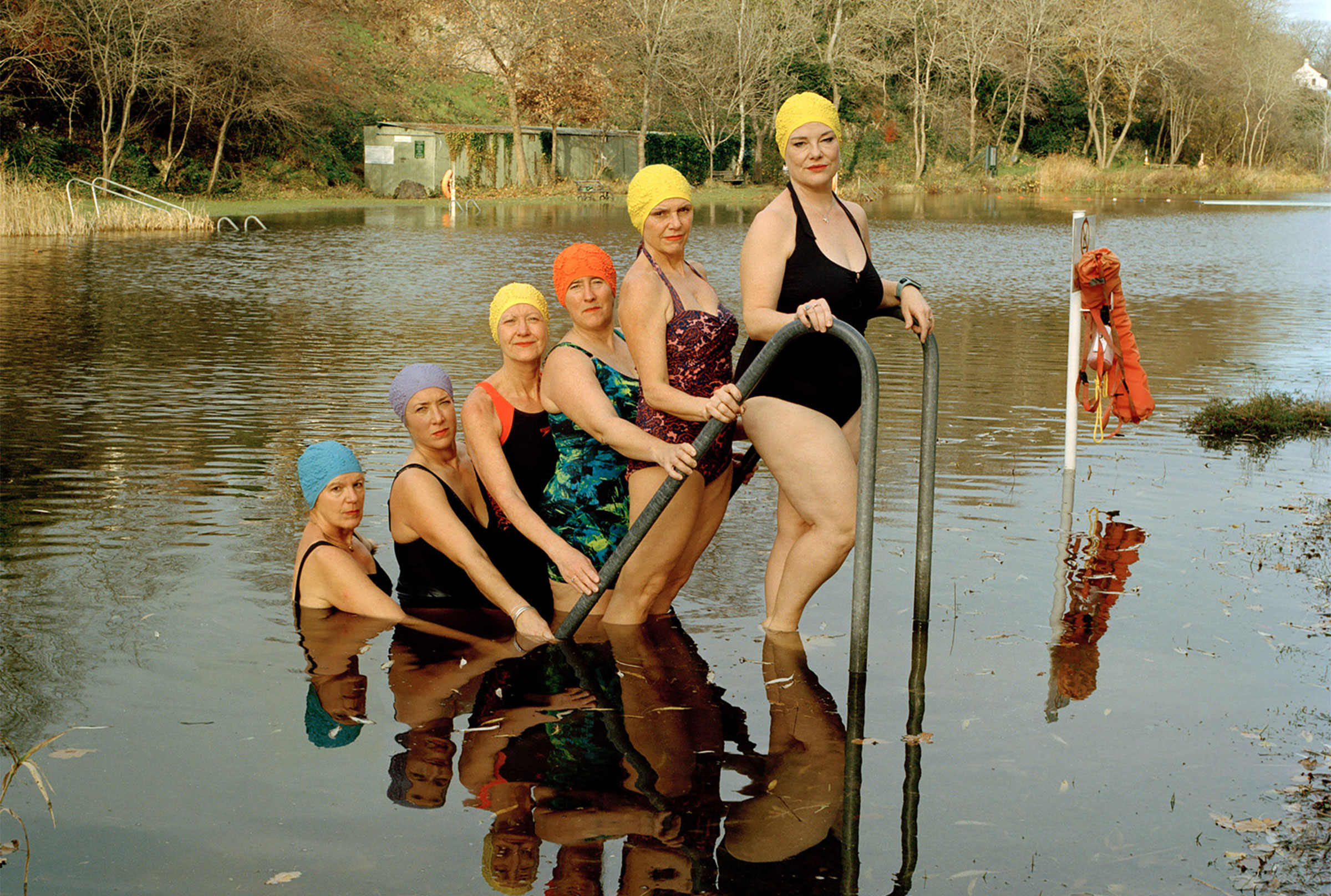
As for The Clams, who call themselves “Melbourne’s least professional, most Clamtastic feminist water ballerinas,” social commentary and a whole lot of fun is their goal. Imagine a group of women and non-binary people wearing red swimming costumes, bobbing in the water, wielding huge tampons with plenty of body hair on show. There’s no shame amongst this group, it’s all about combating it. “Our shows combine feminist commentary with humour and entertainment,” explains Fran van Beek, one of the founding members. “We’re very inspired by synchronised swimmers but what we do is definitely different. Synchronised swimming is a competitive, highly athletic sport whereas we’re performers in waist-deep water! The shows are produced – admin, planning, marketing and everything – by a team of volunteers AKA the Clammittee,” she chuckles.
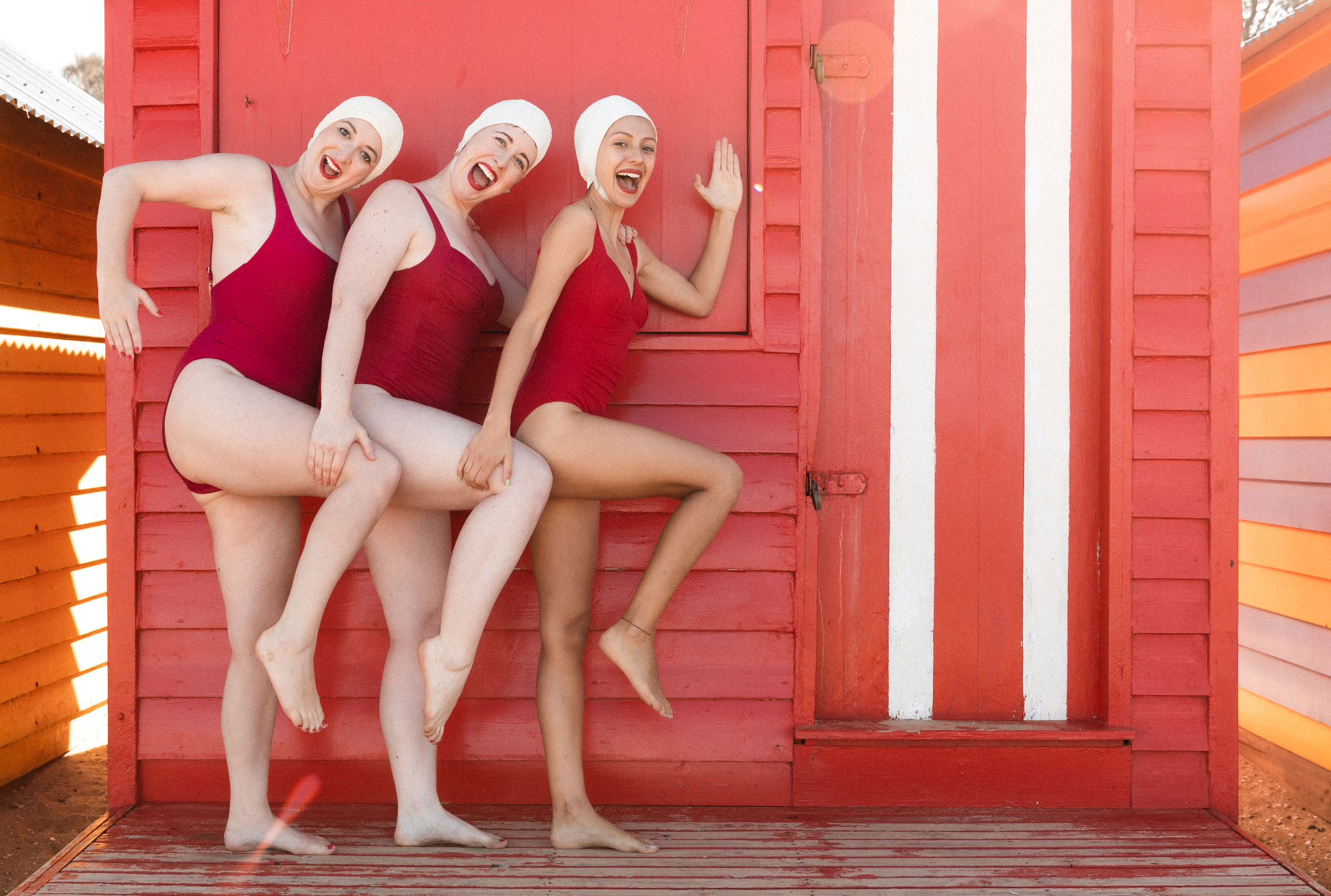
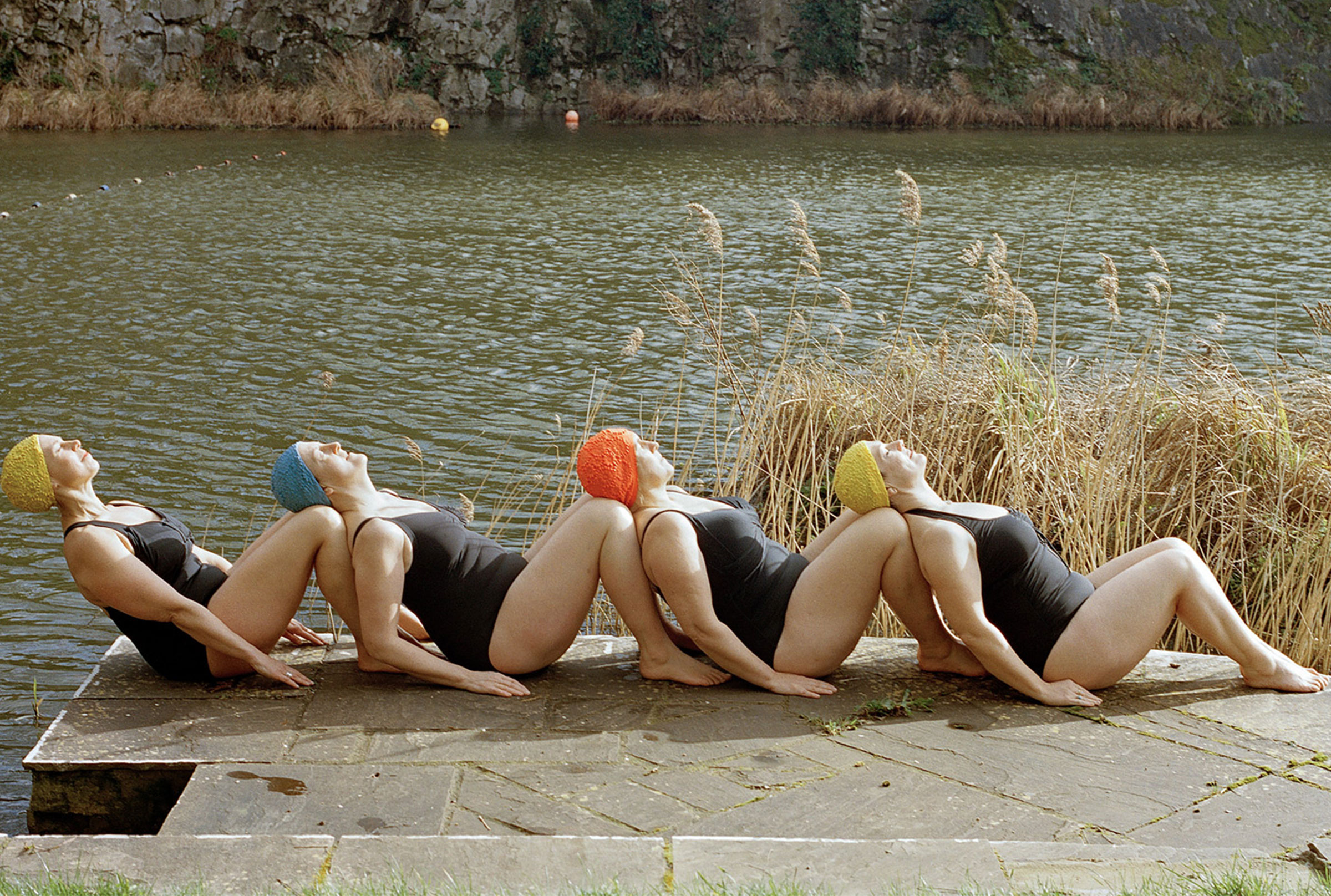
geometry
Their 2017 show ‘Crimson Tide’ is a celebration of menstruation. “None of us had any experience in water ballet, choreography or theatre production or any of the key skills required!” laughed Fran, who met some of the original members at a feminist book club. “A few of us worked in design and marketing so we had the skills to promote the show, but not to produce it. Through word of mouth we found ourselves two amazing independent artists, Holly Durant and Gabi Barton, who agreed to choreograph a water ballet about periods for us. We ended up with a cast of 28 women and non-binary people for our first public performance,” she continues.
“The performance is structured around the different emotional phases many of us experience during our menstrual cycle. The giant tampon props were crafted from pool noodles, rope and white socks, and 40 metres of red tulle resembled a flowing trail of blood in the pool,” she explains. In 2019, their show ‘Grow Your Own Way’ aimed to destigmatise body hair. “We may have bought Melbourne out of thrift shop wigs that summer,” chuckles Fran. “We attached them to our bathers as well as our props.” The Clams are now busy rehearsing for their first show next month since the start of Covid, a performance at Brunswick Bath’s Inclusive Gym and Swim Night to celebrate the LGBTQIA+ community.
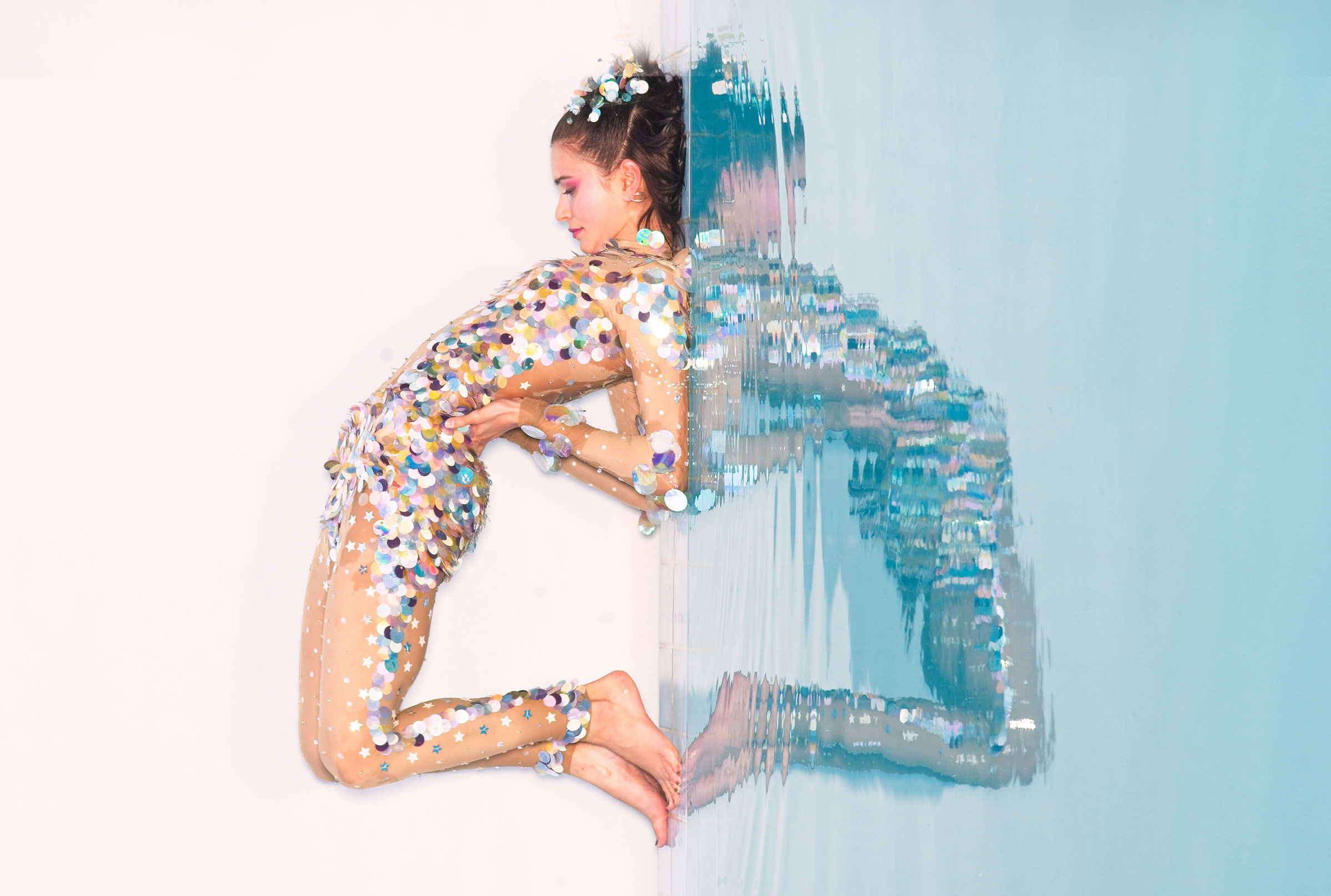
Arms linked and toes pointed, a group of human beings when moving in total unison become something else entirely – a sort of entity, a shape in the water. It isn’t about the individual, it’s the dynamics of the swimminers moving as one. Akin to poet Martial’s poetic response – whether it’s 40 AD Rome in flood water or a hotel swimming pool in 2021 – it’s the athletes’ bodies moving in unison that creates the special sort of alchemy that generates a powerful emotional reaction. “Our choreographies are based on communication with the audience and their feelings,” says Konstantina of her Naiads in Greece. “We blend in with the audience so they feel like they have a personal moment with the performer; that they are part of the entertainment, and that creates a beautiful connection.”
This audience connection and communication is something that’s also integral to The Clams’ performances: “Externally, we hope that what we do helps create conversation and engages people who might not normally think about the issues that we highlight,” explains Fran. “Our cultural attitudes are ever-evolving – albeit slowly – and the arts have always had an important role in that. Historically women have been isolated from each other in the home and conditioned to think of one another as competitors rather than allies – that’s exactly how patriarchal systems flourish. Coming together as a group is critical and that’s precisely what we represent as The Clams. ”
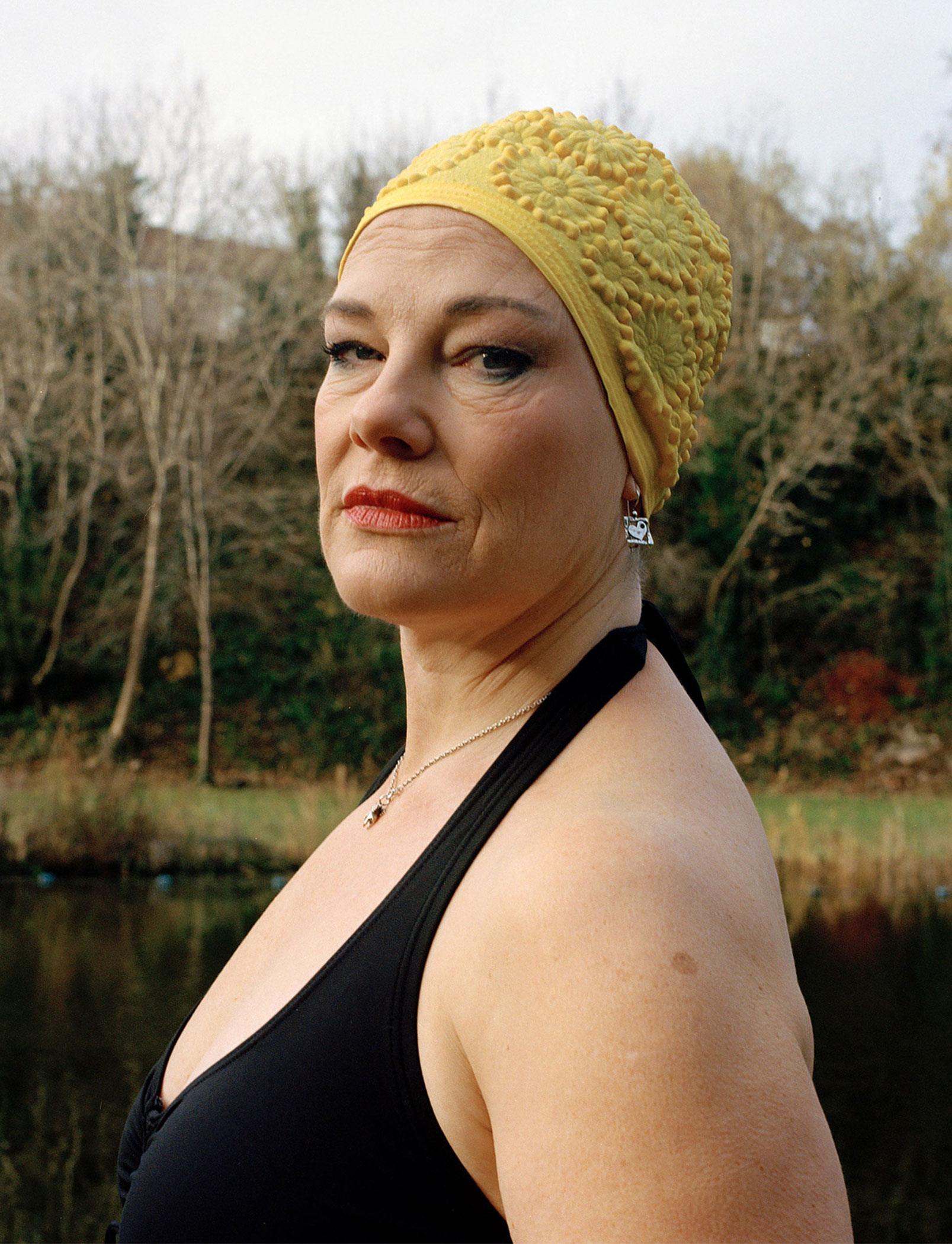
For Konstantina, when she spotted synchronised swimmers practising at her local pool back in the ‘90s, while she was at swim club, it was love at first sight. “Before I started, neither my parents nor I knew of the existence of this sport, but when I saw what the athletes did, it fascinated me and I wanted to do the same,” she says. “The next thing you know, I was a synchronised swimmer,” exclaims Konstantina, but it always seemed to be her fate: “Ever since I can remember, I was drawn to swimming in the sea.” Nowadays, synchronised swimming is called ‘artistic swimming.’ The name change was part of a rebranding exercise to boost the sport’s appeal; it’s how it will be known in all future Olympic Games.
It cannot be denied that what these women create with their bodies is an artform. “As Naiads, we always experiment with new ways of expressing our art,” says Konstantina. The team have recently collaborated with photographer Costas Spathis on a series of fine art photos shot from above by a drone. “The project explored forms and silhouettes; and the aesthetic is minimal,” says Konstantina. But the result is compelling, with the swimmers’ arms, legs and torsos contorting to create shapes such as snowflakes and medusa-like snakes in the water.
Expression

For another group of swimmers in Bristol, UK, Henleaze Lake is their stage. Pushing wild swimming into synchronisation, “We formed initially for a performance to celebrate the lake’s centenary celebration,” says Allison Johnston, who brought the group together for the performance. “It adds real beauty to be swimming amidst water lilies and wild birds.” A different sort of entity to Konstantina and her Naiads, Allison’s troupe are made up of members of Henleaze Lake. They are regular swimmers but not professional when it comes to synchronisation: “We’re made of people from lots of different backgrounds: doctors, journalists, gardeners, lawyers, engineers, circus instructors, midwives… We’ve always been lake-based so we’re used to cold water,” explains Allison, who in her day job works with the Bristol Dementia Wellbeing Service as a Dementia Navigator.
Allison and her team, who don’t have a name (“loads have been suggested, but ‘Sync and Swim’ is our private Facebook group”) were discovered by award-winning photographer Eva Watkins. The photos are natural and mostly taken outside of the water, merely hinting at synchronisation. Examples such as four women sitting by the water’s edge leaning on each other’s legs, all wearing matching swimming costumes and colourful caps.
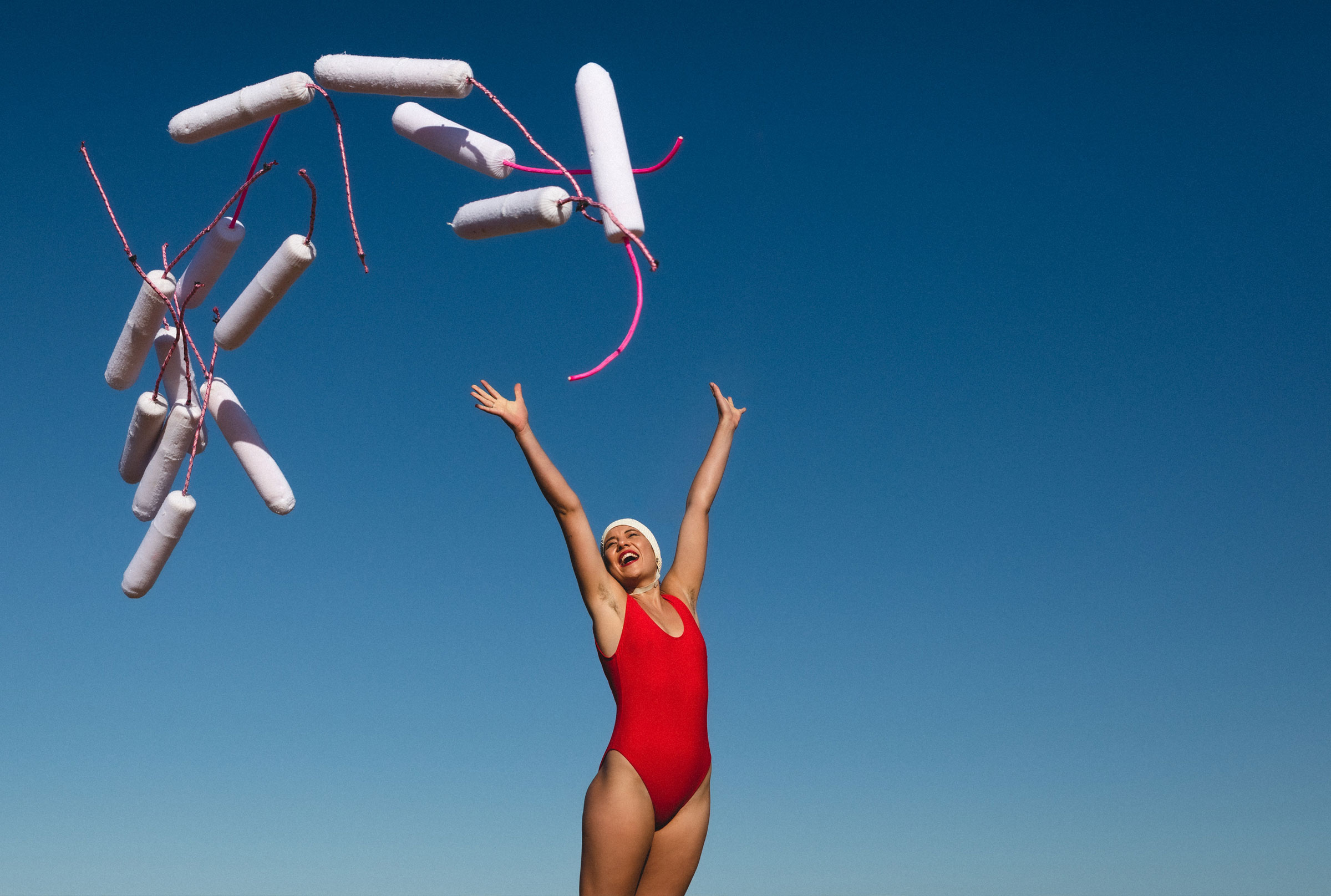
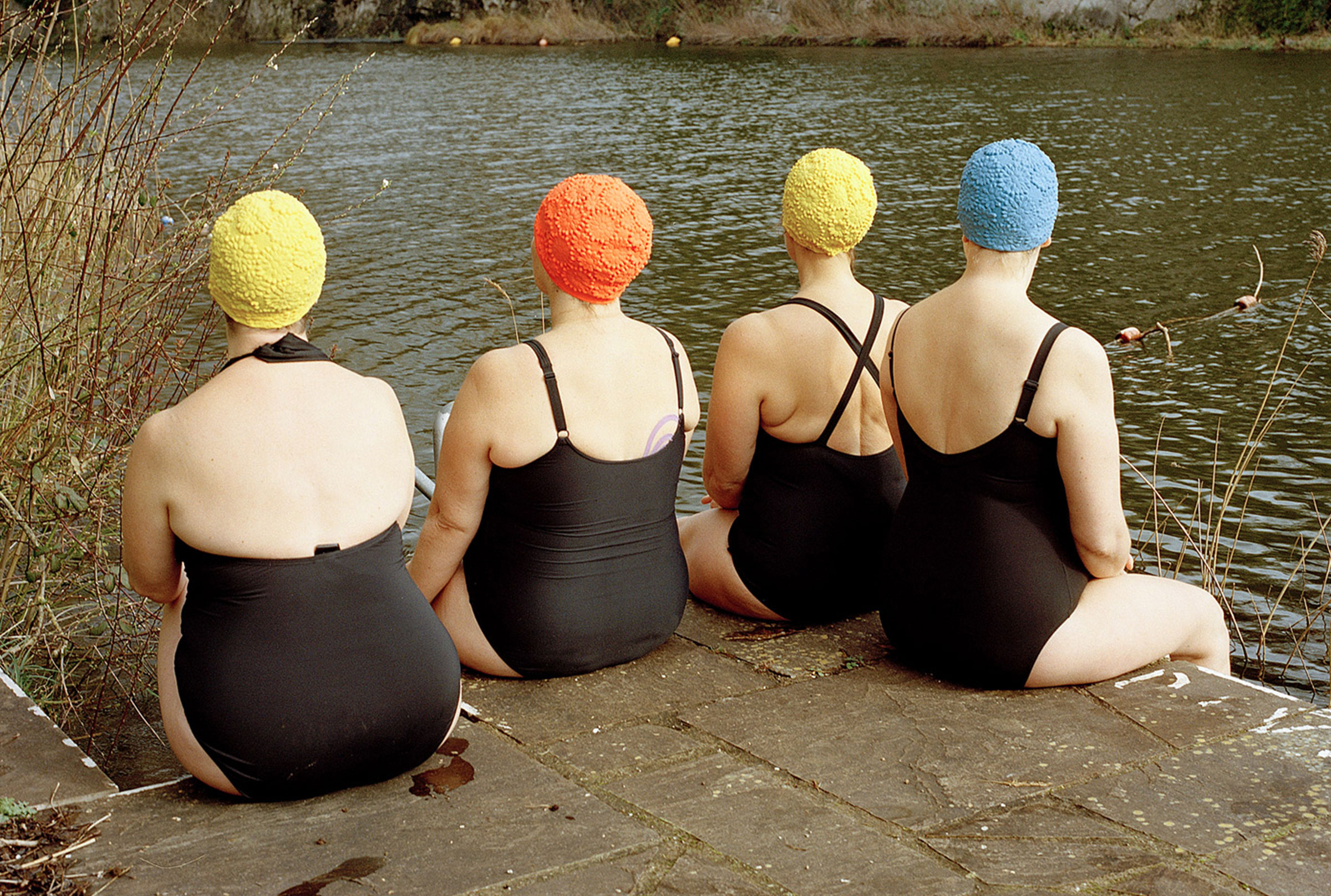
Community
There’s also a line of people wading into the lake through the thick mud that lines its banks – an insight into the realities of synchro in the wild. “Organisationally it’s tricky as the entry points to the water are not always well spaced. We also meet in small groups in the local river Avon and the sea at Clevedon. The river is good fun as it adds a moving water element and people love to watch us as they walk on the river bank.”
Even when she was an athlete competing, Konstantina believed that synchronised swimming is more akin to ballet than it is gymnastics. “It’s a dance, an art, a performance. The focus should be on expression and artistry, rather than technical execution,” she explains, and this is definitely something that is at the heart of each team. “In ballet, despite it being a strict technical dance, what captures the audience is expression – not flawless, soulless execution. Swimming for entertainment is exactly that. It’s about the artistic part of the choreography and we focus on how our audience feels when they see us.”
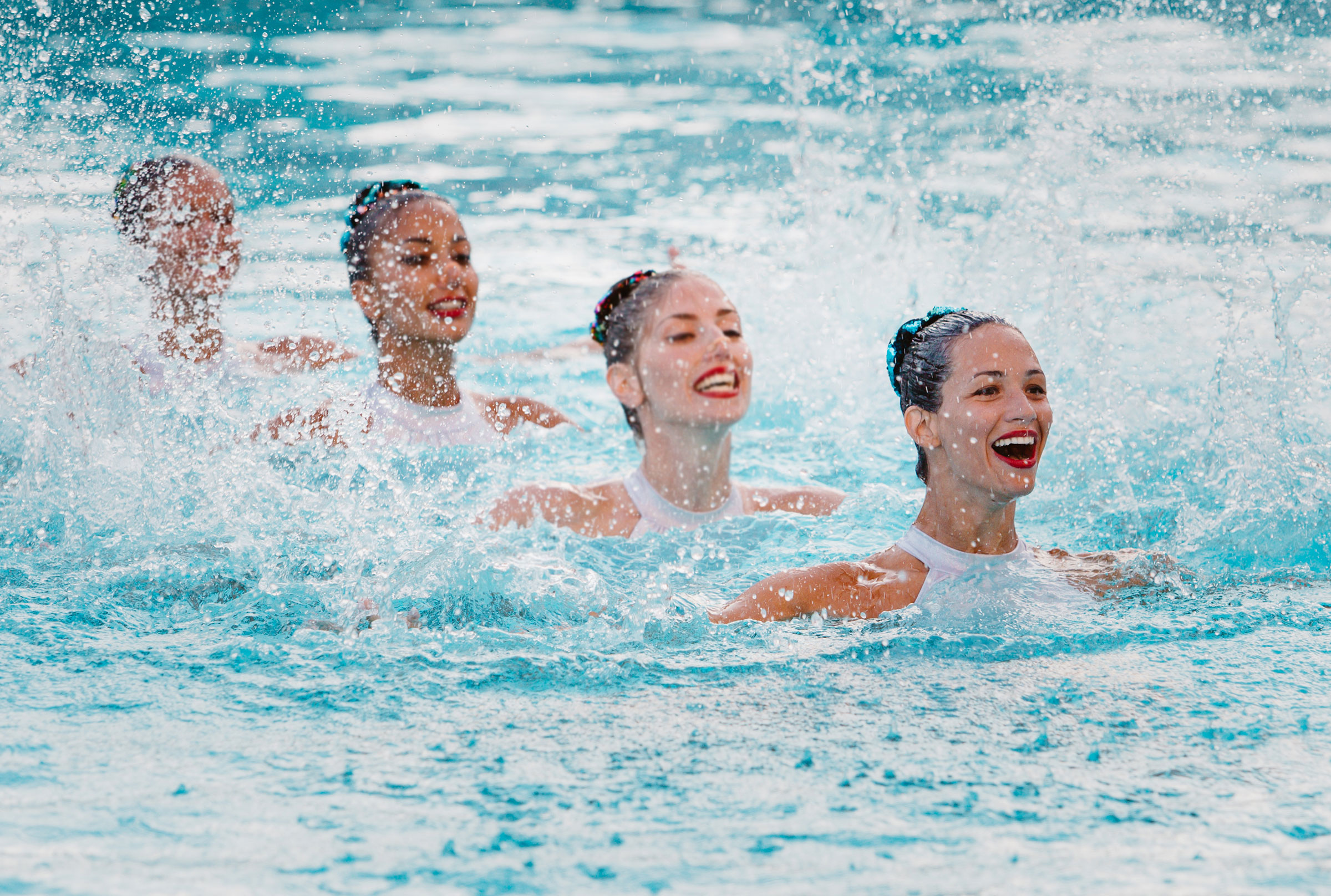
But for The Naiads, it’s also about continually pushing boundaries, and they even synchronise their performance with fireworks – both in the water and on dry land. “We were able to swim around a floated firework fountain,” said Konstantina of this feat, which she described as one of the team’s highlights and biggest achievements. The Naiads’ spectacular performances look effortless to the audiences who consume them. But it’s supposed to, that’s part of the appeal – and one of the golden rules of the sport, synchronised swimmers must maintain “an illusion of ease,” according to the rulebook by FINA (the governing body of swimming, diving, water polo, synchronised swimming and open water swimming). A literal human embodiment of the swan metaphor; a perception of calm and control, but what is hidden from the public gaze? A lot of hard work and intense preparation like the manic paddling of webbed feet under the waterline that enables the swan to move with seemingly graceful ease.
“We divide the music in counts, so we know what move to make in each beat of the song,” explains Konstantina, but the team also communicates not by speaking, but by small nods of the head. “We do that only when it is absolutely necessary, though” she asserts. “In high season, we might train five to six times per week,” continues Konstantina. “The synchronisation is the difficult part, which is why our training sessions last so long; three and a half hours on average.”
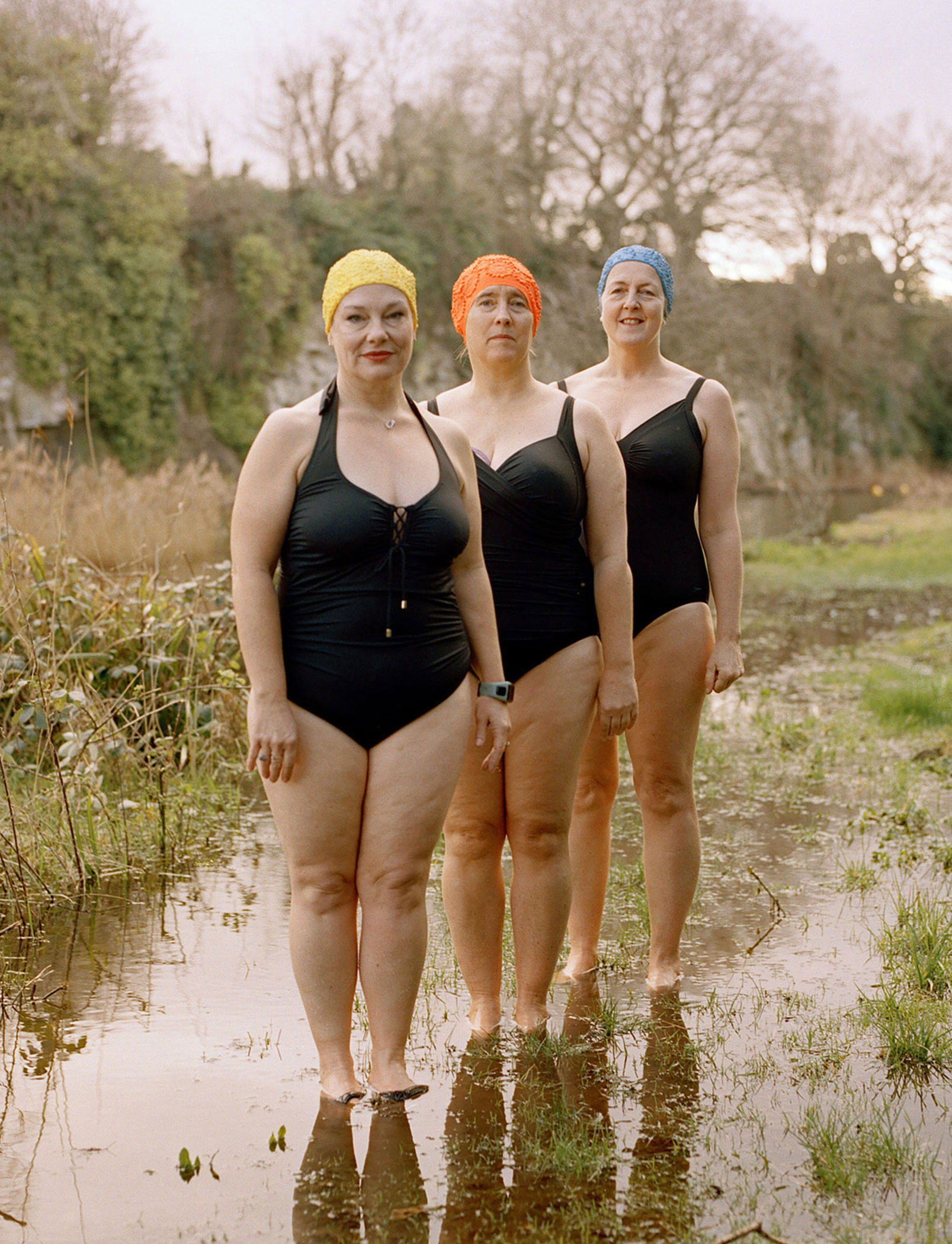
Considering everything they’ve been through together, the members of each of the teams have formed an unbreakable bond. “It’s great for mental and physical health and you make fabulous friendships,” said Allison. “Cancer has been something that a few of our team has experienced – including myself – and the group has been a great support through difficult times.” For Fran, being part of The Clams brings together the things that are most important to her: “Having a creative outlet and spending time with friends because often such pursuits are solo. I also love doing something to help effect positive social change.”
“Fighting for a common cause, we all come up against the same difficulties and feel the same physical pain,” says Konstantina. “There have been times that we had to be awake for over twenty hours to travel to the other side of the world and still have to rehearse. Or when the external temperature and the temperature of the pool were very low, but we still had to perform. During those moments we almost hated what we did, but now they are our best memories and we would definitely do it again!”
Illusion
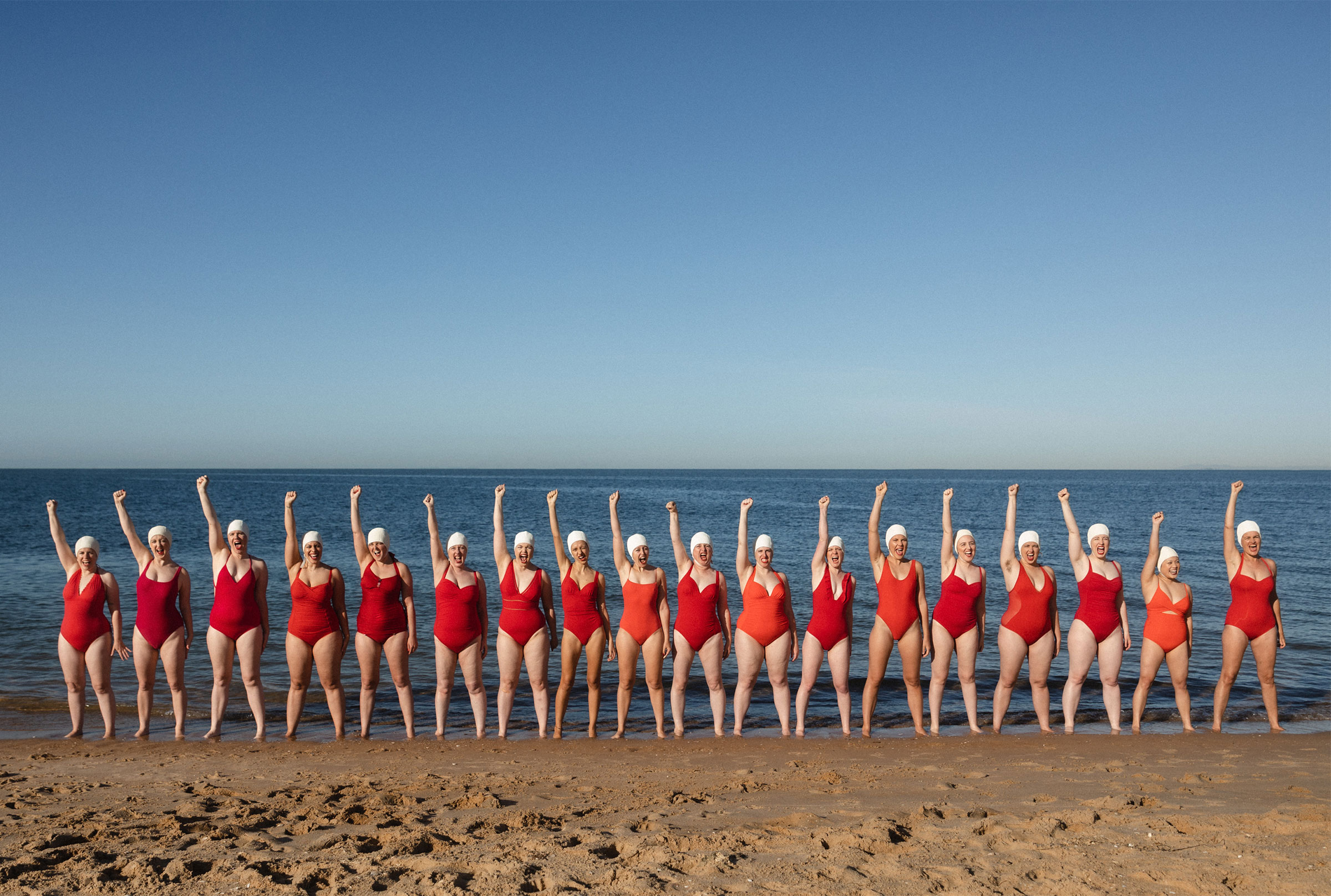
Although the teams couldn’t be more different, what they have in common is that feeling in the water, together, moving as one. “It’s very exciting and motivating to swim in formation,” says Allison. “You forget about the coldness of the water when you are concentrating on the routine.” Her fellow teammate Sian shares Allison’s passion: “The feel of the water over my body as I propel myself forward is like nothing else. Getting into the zone and letting my mind wander while I swim is heavenly. I often analyse my problems and think through any issues. It’s my time for my brain to declutter.”
According to Fran from The Clams: “It’s a fabulous feeling, swimming with such a supportive and playful group of women and non-binary people.” She added that they recruit new Clams once a year when they put on a new show: “Rehearsals are a lot of fun.” And for us, the audience, there’s no greater escape than getting lost in the aquatic sorcery, comedy, music and movement that these magical women conjure in the water.
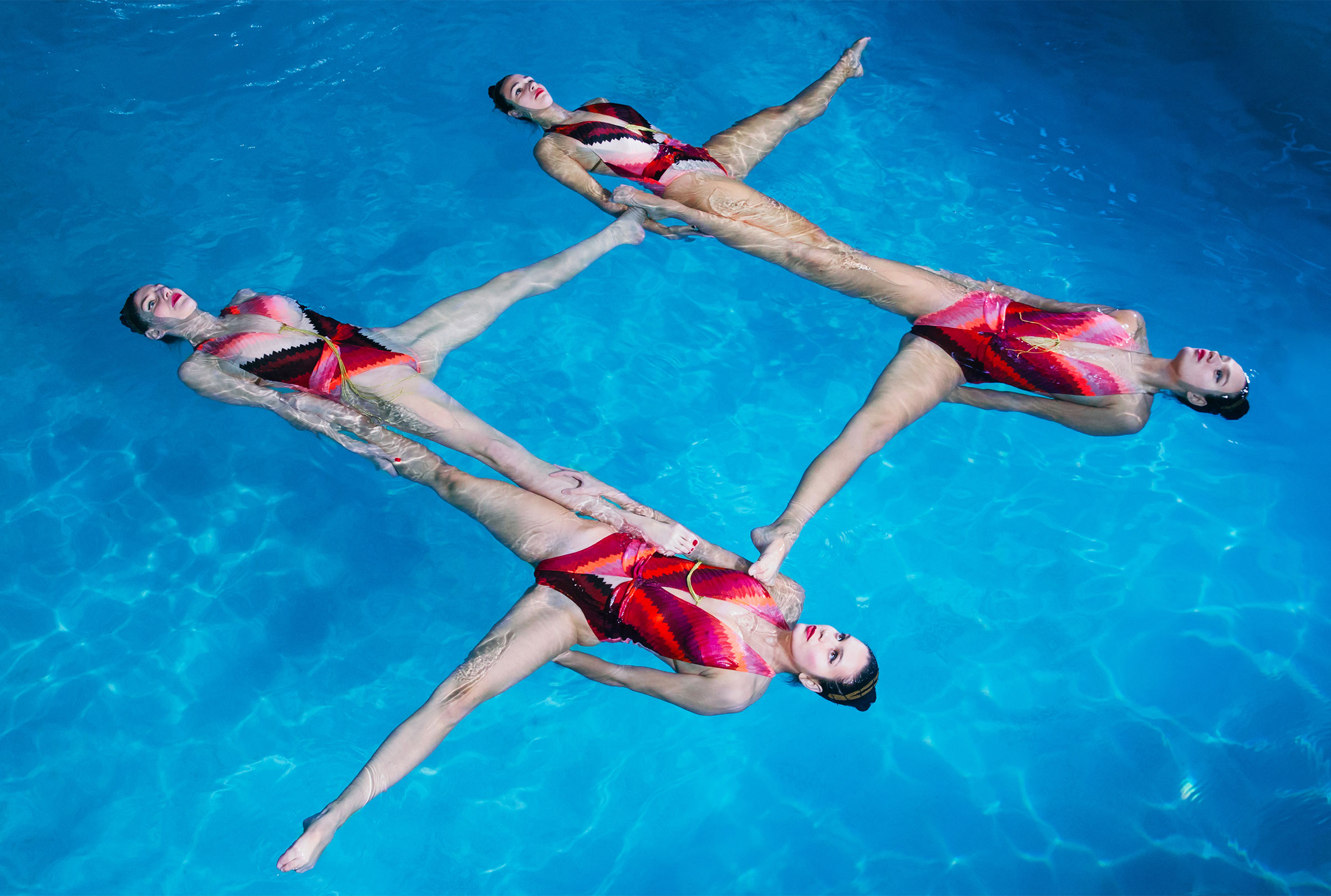
Editorial Design Root
